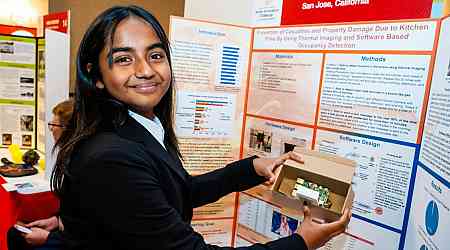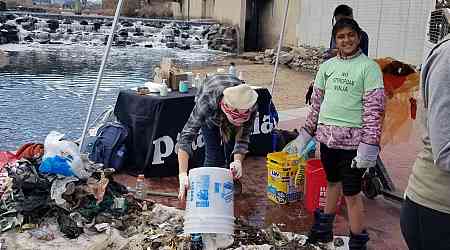
The risk of teenage pregnancy continues to rise at alarming rates. Representing 5% of total births in the U.S. in 2022, there were more than 146,000 teen births—the overwhelming majority of which are oftentimes unintended. Part of this is due to the advancement in our bodily development. In May, 2024, the Harvard T.H. Chan School of Public Health released important data that shows the continued trend of earlier puberty in girls. This, coupled with data showing that more than 30% of teens are having sex (most of the time without contraception), sheds light on just how vital reproductive care and sex education is to young people.
[time-brightcove not-tgx=”true”]Yet, in the post-Roe, Dobbs abortion-limiting era, we see policies and legislation going beyond abortion restrictions, limiting sex education and contraceptive access. We thus need to ask how Dobbs-era policies will deal with the biology and behavior of puberty to reduce unintended teen pregnancy.
For the past several decades in the U.S., there has been a gradual decline in the age of when girls have their first period, medically known as “menarche.” It has been suggested that weight or body fat content changes may play a role in this phenomenon in children, but other factors, including environmental stress, may also have an impact. The average age for the first period is now just less than 12 years, when most girls are in fifth or sixth grade. In up to 15% of girls, the first menstrual cycle will occur at 10 years old when most girls are just in fourth grade. The trend of earlier puberty is even more pronounced in children of color, as menarche now occurs at about 11 years and six months for Black and Hispanic girls.
Although the proportion of teens reporting sexual activity has dropped slightly over the past few years, data from the 2021 CDC Youth Risk Behavior Survey (YRBS) shows that 30% of high school students have had sex, and 20% are sexually active. Only 50% of these sexual encounters involved condom use, and only 37% of sexually active females used hormonal birth control. Earlier studies of junior high students revealed that 5 to 20% of sixth graders and 14 to 42% of eighth graders engaged in sexual intercourse. Not only do unprotected sexual practices place children at risk for pregnancy, there is also increased risk of sexually transmitted diseases like HIV, Hepatitis C, syphilis, and gonorrhea, which are on the rise in young people.
Read More: What Nebraska’s Sentencing of a Teen Who Used Abortion Pills Might Mean in Post-Roe America
It is estimated that 61% of pregnant teens give birth, 25% have an abortion, and 15% of pregnancies end in miscarriage or stillbirth. Looking at legal abortions in the U.S. in 2021, individuals less than 15 years of age accounted for 0.2% of pregnancy terminations, and those between 15 and 18 years accounted for 9%. That year, there were about 1,400 abortions in children younger than 15 years and about 56,000 in those between 15 and 18 years, out of the nearly 650,000 performed in the U.S. In coming years, there will likely be fewer teen abortions and more unplanned births, especially for those who cannot travel to other states from the states with abortion bans. And with puberty coming earlier, this issue is expected to have an increasing impact on younger adolescents.
Showing the value of improved contraceptive availability to teens, teen birth rates have remarkably dropped nearly three-fold over the past two decades. The teen birth rate was 61.8 per 100,000 in 1990 and 13.4 per 100,000 in 2022. Yet, among different racial and ethnic groups, teen birth rates are now nearly two-fold higher in Black and Hispanic girls than in white girls, being about 20.3 per 100,000 in Black and Hispanic girls and 9.1 per 100,000 in white girls in 2022. This difference reflects, among other things, differential access to contraception.
Teen pregnancy prevention rests on two essential pillars: education and contraceptive availability. Abundant evidence shows that teen contraceptive use—including IUDs, long-acting reversible contraception (LARC), oral contraceptives, and condoms—have an excellent safety and efficacy profile if used correctly. However, teen contraceptive access varies from state to state. In 27 states and the District of Columbia, teens can obtain medical contraceptives without parental or legal guardian consent. In other states, minors may consent to contraceptive services without parental permission but with special conditions. When parental consent is required for teen contraception, there is less sexual healthcare service use.
This past year, though, has seen an important milestone related to contraceptive access. In July 2023, the FDA approved the first over-the-counter oral contraceptive, Opill, available at low cost and without age restriction. Emergency contraception, including Plan B, is also available over the counter without age restrictions. Here, too, we have availability challenges, as some pharmacists have refused emergency contraception and birth control to pregnant teens in light of their beliefs.
The second pillar of teen pregnancy prevention is sex education. Recognizing the ages at which children begin puberty, starting sex education in the third or fourth grades, is recommended. There are also well-developed and effective sex education programs for schools that incorporate pregnancy prevention education. These programs also address sexually transmitted disease prevention.
The problem is that not only do these programs vary state to state, many reproductive health programs also begin after children have entered puberty and are not comprehensive. Reflecting policies that seem to counter efforts to reduce abortions, we see that many of the same states that are restricting abortion access are now restricting sex education programs in schools, in part to avoid discussion about the LGBTQIA+ community. Some of these changes are trumpeted under calls for “parental rights” or “abstinence promotion.” Whereas abstinence promotion may reach some students, in most situations, this is not a practical teen pregnancy prevention strategy. Many parents are also uncomfortable discussing sex with their children and do not have the background to provide education to children at the level that health professionals can offer, nor can they properly discuss different contraceptive options.
Read More: How Arizona’s Abortion Ballot Measure Could Affect the Presidential Race
There are other potential legal consequences of teen pregnancy that we are seeing with the criminalization of teen abortion assistance. Many individuals who live in states with abortion bans are traveling to other states or using telemedicine for abortion services. Yet, two states, Idaho and Tennessee, will now criminally charge adults who assist minors in obtaining abortions. We have seen similar state-sanctioned anti-parent action against those seeking mutually agreeable, gender-affirming care for their children, showing how some states are legally overriding parental rights on issues that are traditionally between the family and physician.
Following the Dobbs decision, we heard that some states limiting abortion were going to provide additional support to pregnant women and families of unintended pregnancies. That said, it is unclear whether additional services have been provided. States with restrictive abortion laws also have seen increases in children entering foster care, but have historically provided less support for women and children, as well. These facts, in combination with the higher Black teenage pregnancy rates, have led to the notion that abortion bans in states with large Black populations will worsen racial inequities in child welfare systems.
No matter where we live, we need to acknowledge our children’s biological changes and create safe spaces where they are able to learn—and thus prevent—unintended pregnancy. It is not possible to legislate these biological facts away by limiting sex education or altering teen contraceptive availability. Instead, we need to recognize the importance of this issue, especially in the post-Roe era, rather than sliding backward.



























